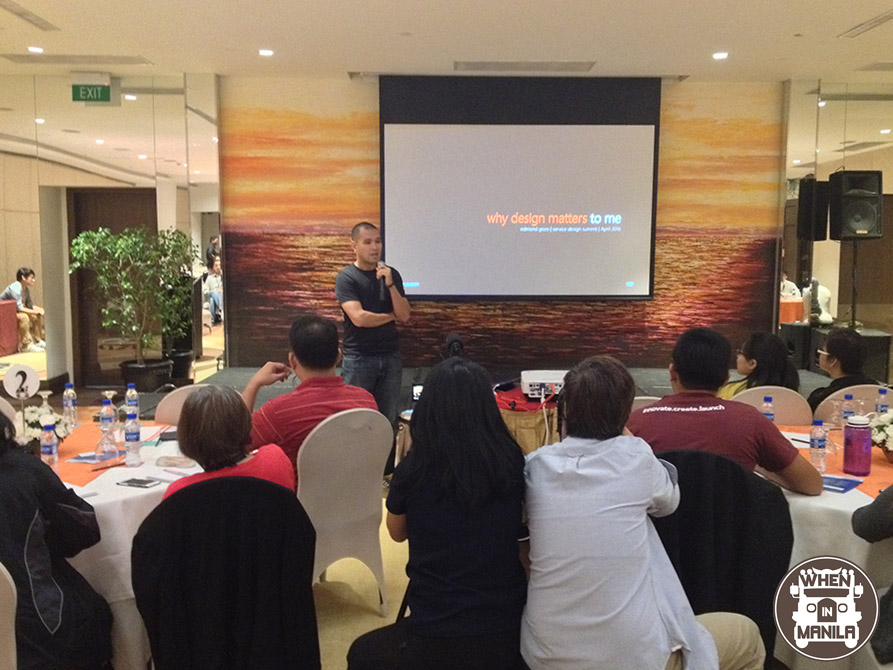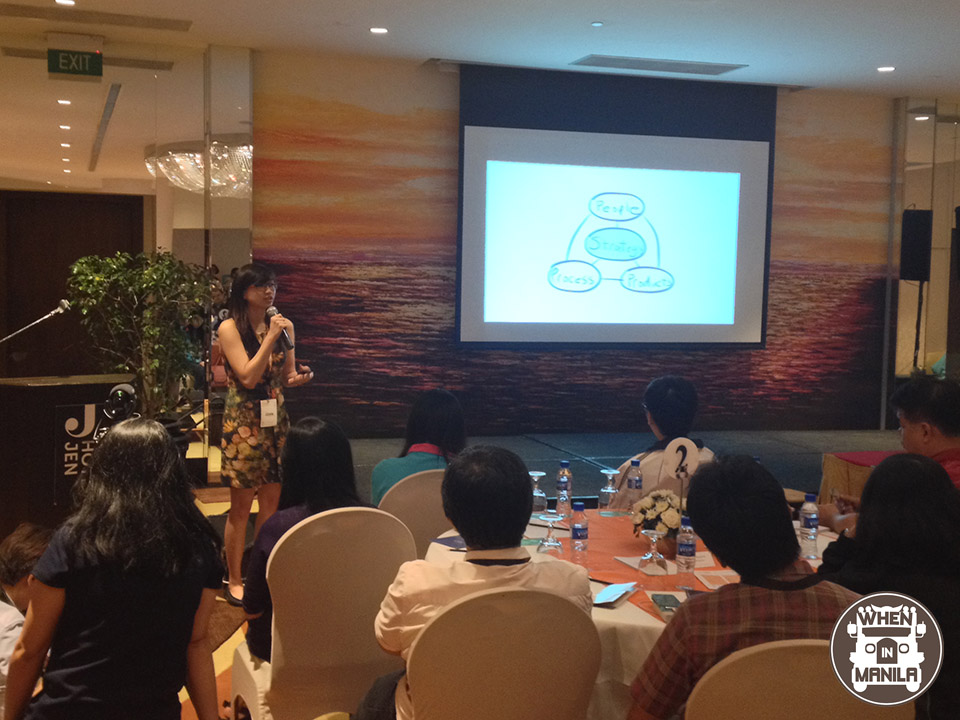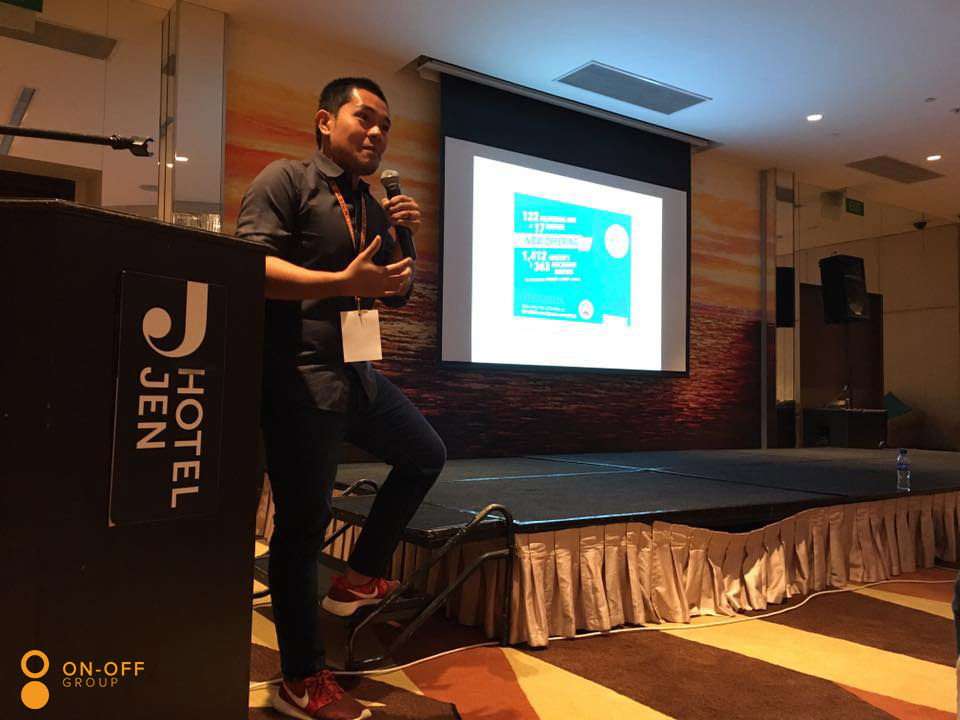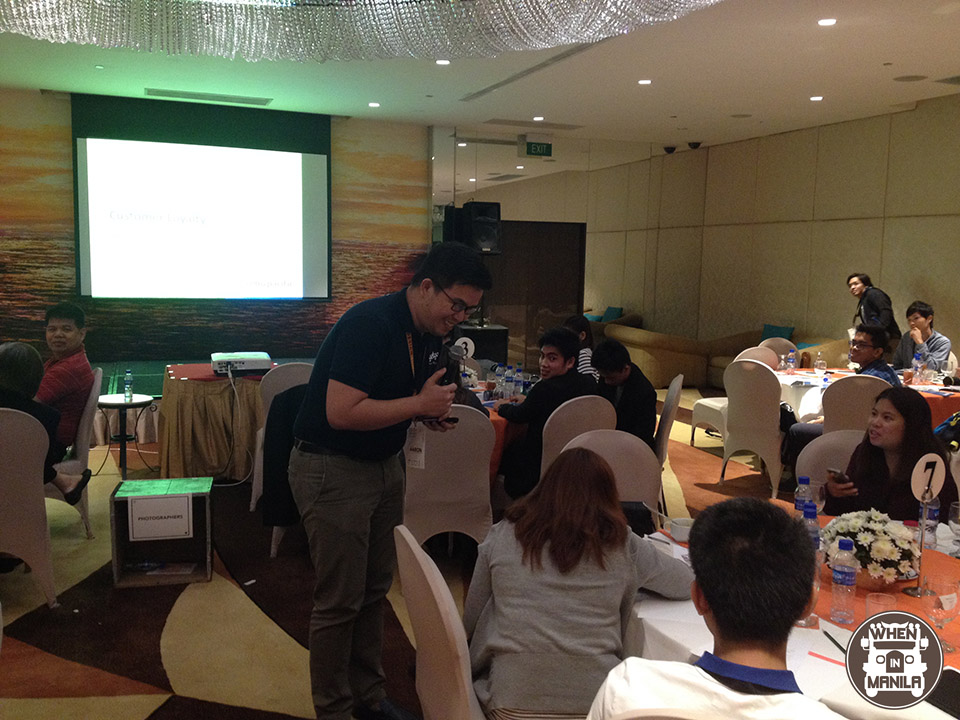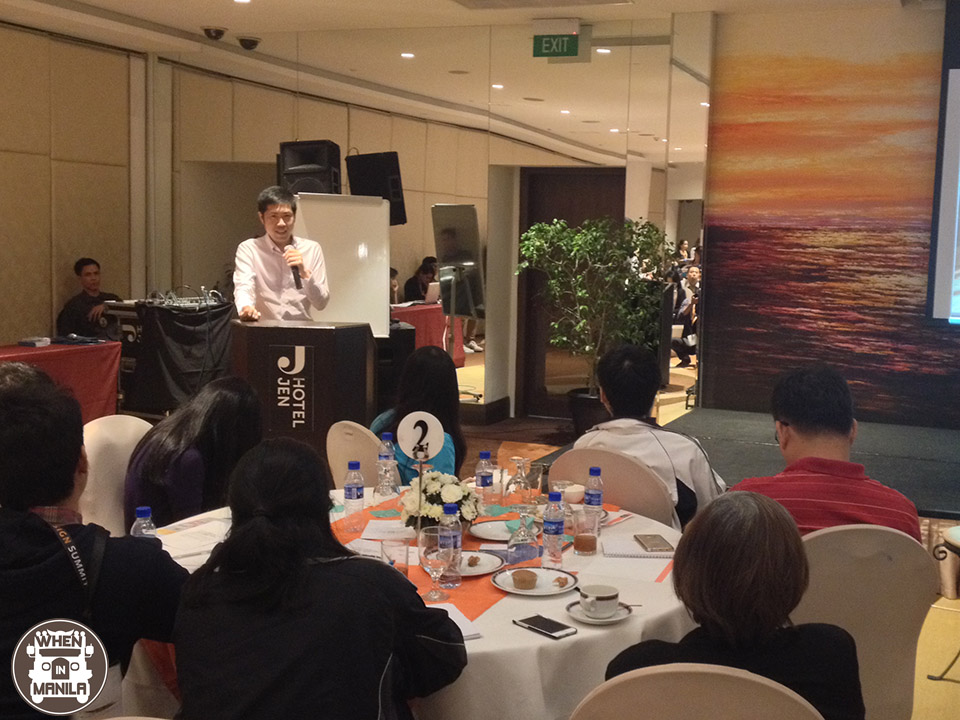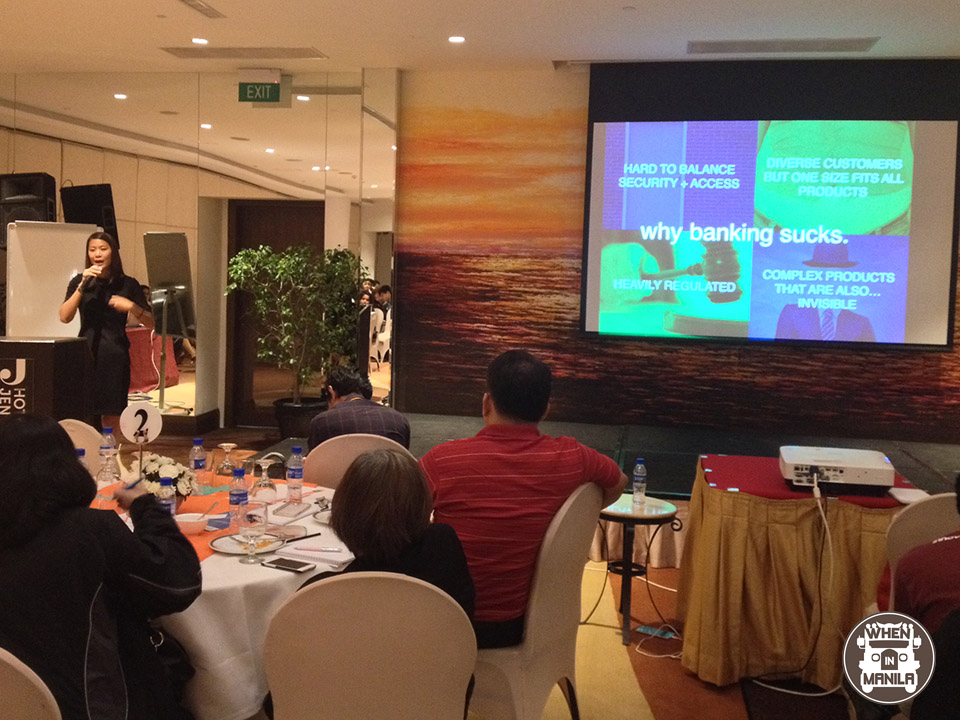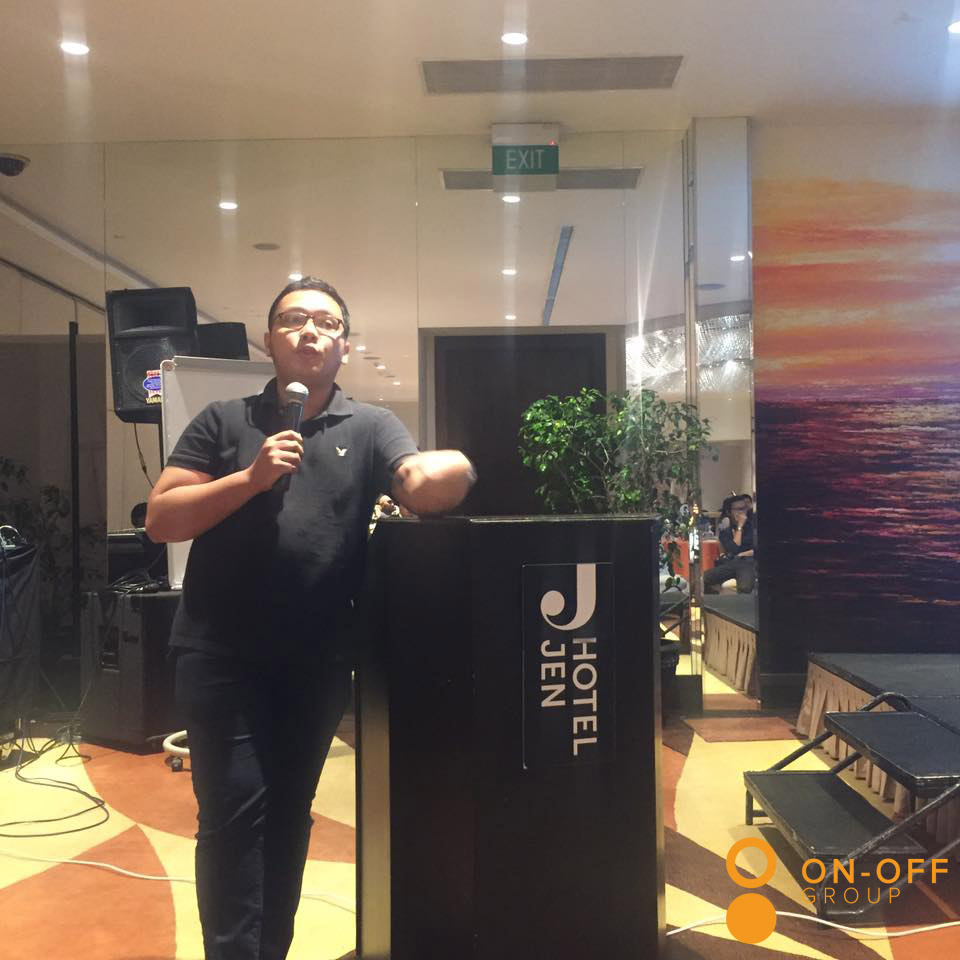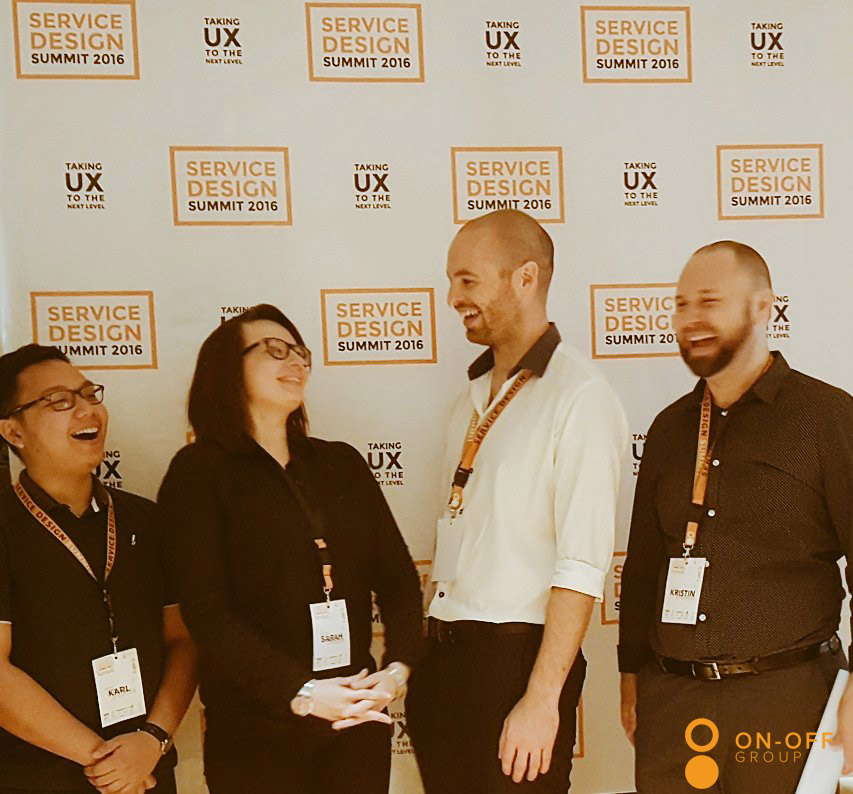The second day was lined up with talks from local speakers about the importance of service designs and their experiences working within their industries. The talks were really relevant because the speakers’ experiences are within our country. They had exposure to what Filipinos normally go through.
Edmond Gozo of IdeaSpace shared the importance of Service Design. He shared that customers are the only one that sees us end-to-end. They do not know the complexities of an organization and it should stay that way. There had been many accounts about customers being passed on to different departments when they call customer service. These experiences usually lead to bad customer reviews. We could improve our services if we go back to the roots of design and just ask ourselves: what do our customers need? By answering this question we can design an ecosystem that would leave our customers satisfied. Ed ended his talk by sharing, “Design is deciding how to treat people”
Joan Magno of Kalibrr talked about how they use empathy and user research to build for people. Empathy is the core of service design. As a part of a service company, they value how they treat and help their customers. They build a team that understands their customers to make them feel important. They immerse themselves with their target market so they can be aware of their motivations. They improve their web application so that they can offer better service for their users.
Simply put, their customers shape their products and services.
Gerson Abesamis of Habi Education Lab explained how to know your customers through research. Gerson hailed from the education sector. He emphasized that there was a tendency to oversimplify the way we look at the users and forget to have a deeper look at them as individuals. He pointed out the importance of using qualitative data when doing a customer research.
There is a need for us to study the lifestyle, culture and beliefs of people and observe how it affects their engagements with the services we provide. We are working with people and they are not just statistics and numbers. A lot of external factors should be taken in consideration to provide quality service, thus there is a need for interviews, focus group discussions and observations.
Aaron Dela Paz of Cebu Pacific Air imparted how to innovate with customer loyalty. When talking about loyalty, we usually think about points, freebies and rewards. On the other side of things, it is about retaining customers for repeat transactions. Innovation of customer loyalty is needed because customers are the life-blood of any service. To effectively innovate customer loyalty we need to: know your customers, know where they are and, know the tools that can help you.
Using Cebu Pacific as a case study, they target a wide market because of their low-cost model. They use crafty advertisements tor reach their customers using social media, email, phone, etc. They also use analytics and technology to help improve their services.
Birdie Salva of Curiosity talked about how local insight helps create meaningful designs. He showed us case studies they took part in and shared how simple behaviors can affect how we designs. In a social study, we need to look for the participants systems of beliefs, values & practices, rules of engagement, social members and, artifacts, materials and spaces.
Interesting experiences were brought up. An example case was a study on why mothers do their laundry around the water pump even though it is not recommended. Washing clothes near the water pump causes the pavement to be moist thus algae and moss may build up making the area unsafe. Studying their social engagements suggest that the reason they do not acknowledge the “rule” was because they enjoy doing laundry in the company of other mothers. We can now see that little deviations from following the rules and processes has their own weight and need to be considered.
Gerry Dy of Security Bank enlightened us regarding Re-imagining the banking experience. Most of us have one or two stories about bad banking experience. Taking a look behind the scenes, banks have to deal with several factors to provide service such as: security and accessibility, government regulations, and the complexity of the market and banking procedures. The challenges of providing better banking experience is a difficult task but is needed. At the heart of Gerry’s talk, she mentioned that her organization adopted a service mentality because people matter to them. This paved the way to creating a quick onboarding process and an efficient way to change banks.
Karl Satinitigan of the Office of Sen. Bam Aquino talked abaout Bureaucracy and Service Design. It was a great that someone from the government came and gave accounts on the different approaches Senator Bam’s office took to provide service to the people. They focused their service to revolve around the Go Negosyo Act, specifically the Go Negosyo Centers. These centers are mostly based on provinces to aid individuals with their businesses. Designing this service was not easy because there are a lot of existing problems to fix but their solution was engaging all the stakeholders involved in the service. From getting the support from the top management like DTI to the training of the front liners in the certers and also working with the middle management in the regional offices.
Thank you On-Off Group for organizing the Service Design Summit 2016. We hope to see you again next year for a bigger and better conference!
At the end of the summit, I can confidently say that it was a really great event. It made me think of how much better the Philippines will be if every organization from the public and private sector would just take a step back and have a look on the people that makes use of their services. I remember a story from Japan, that a train station kept their operations running for one student. They know that their service has an impact to this individual’s life.
Here’s a quote that Birdie Salva shared that came from Bobby Guevarra, “I tell my students, if you want to save the world, you have to absorb its pain. Hindi pwedeng walang aray” (I tell my students, if you want to save the world, you have to absorb its pain. It’s not optional not to experience pain). Empathy puts us in a position to provide better solutions for our society.
On-Off Group
https://www.onoffgroup.com
https://www.facebook.com/OnOffGroup

